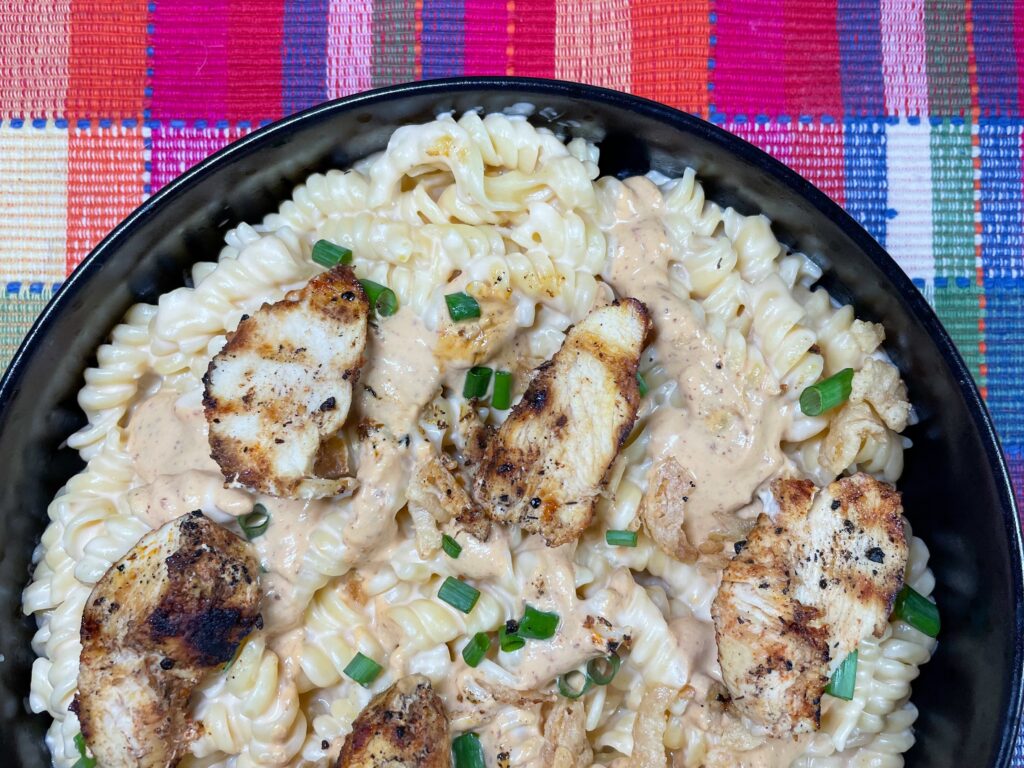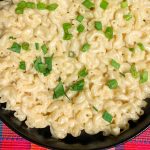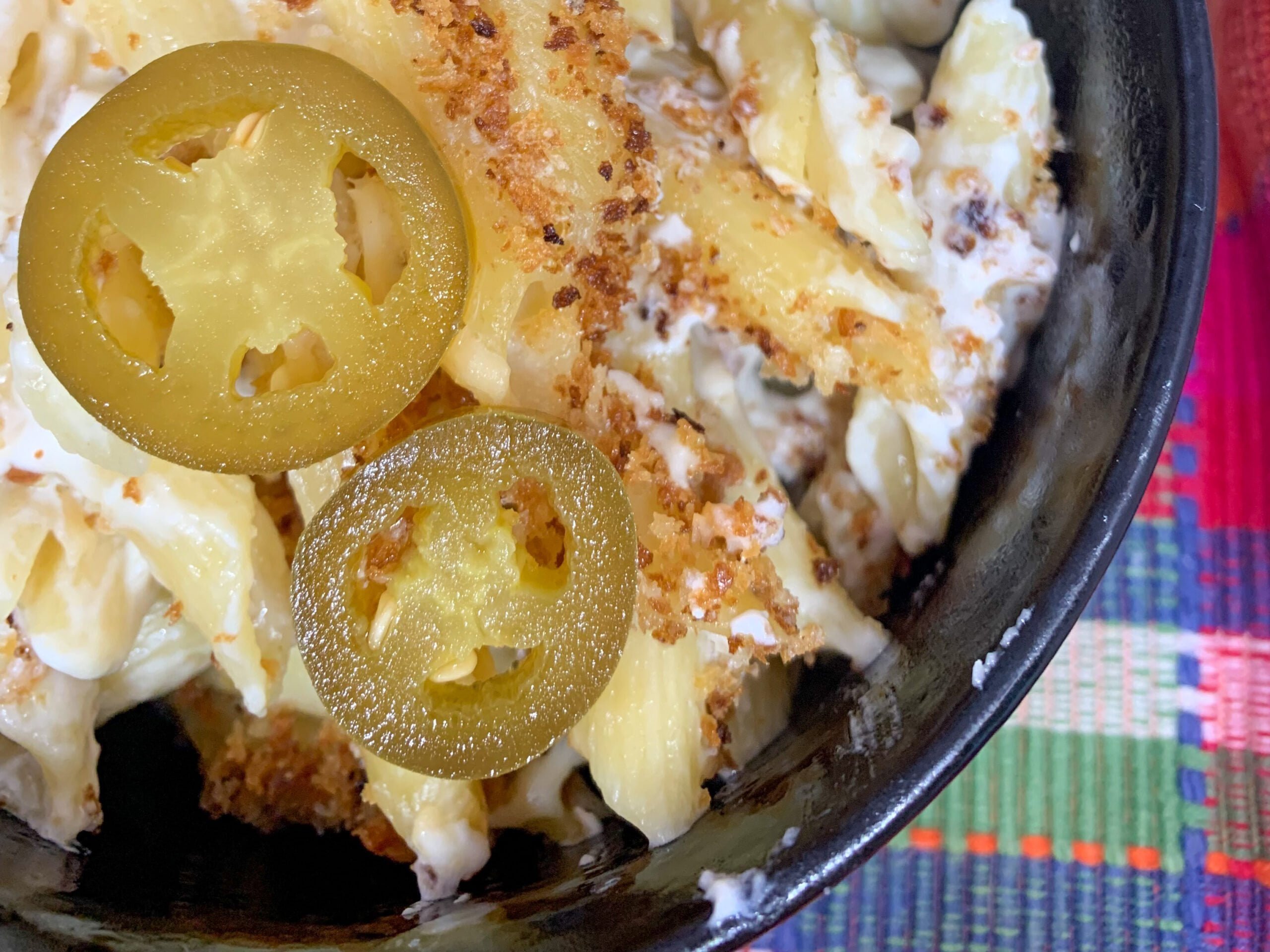
Using cheese in mac and cheese doesn’t have to be complicated. So many people feel like their mac and cheese recipes have to use as many cheeses as they can cram in there, but the right balance of cheeses is a work of art. My formula, based on the concept of ‘opener’ and ‘closer’ cheeses allows you to use two (or more!) cheeses together to have flavorful, well-rounded mac and cheese dishes.
Opener Cheeses
When you take a bite of cheese, pay attention to when the flavor develops. Some cheeses, like cheddar, young Gouda, or mozzarella, deliver their flavor immediately but fade quickly. You get an instant burst of cheesy flavor that dissipates before you finish the bite. These are what I call opener cheeses. Including an opener cheese in your mac and cheese ensures that first bite delivers immediate cheesy satisfaction.
Closer Cheeses
Some cheeses take a few seconds to develop their flavor, but once they do, that flavor carries through to the end of each bite. Think Parmesan, Asiago, and Gruyère. These are what I call closer cheeses. Including a closer cheese in your mac and cheese ensures the cheesy flavor lingers, creating a complete flavor experience.
Putting the Mac and Cheese Theory to Practice
Take a look at my simple mac and cheese recipe. It features extra sharp cheddar and Parmesan cheeses. Cheddar is the opener – it says hi and welcomes you to the bowl like a warm hug. Parmesan is the closer, always fashionably late to the party but sure to leave you with an impression. Both serve vital roles, and the mac and cheese just isn’t the same without each of them working together.
In my fridge, you will always find extra sharp cheddar and Parmesan. You never know when you will have a cheese emergency, and they are great cheeses to have on hand. When experimenting with new cheeses, you want to balance the flavor with an opposite counterpart. If your new cheese is an opener, combine it with Parmesan. Is the flavor of the cheese you bought at the end of the bite? Use your emergency cheddar to help it stand out.
We aren’t limited to one type of each cheese. You can include a variety of opener or closer cheeses, just make sure you have at least one counterpart to balance your recipe. Feel free to use cheddar, Asiago, and Parmesan all in one bowl. Was there a mega sale on Gouda and mozzarella? Use all of it! Just make sure to balance it out with another closer cheese. Using cheese in mac and cheese isn’t complicated, as long as you include at least one opener and one closer cheese.
Flavor Strength
Keep an eye on the strengths of cheese you choose to incorporate. Aged cheddar is almost always a better choice over mild, and mozzarella is something you’d want to use for texture rather than how it tastes. The flavor of your cheeses needs to be highlighted, and some cheeses are simply too mild to serve a flavor role. Consider adding other flavorful cheeses (or even other ingredients!) to help your mac and cheese stand out. However, if you used plenty of cheese but the flavor is lacking, try adding a little salt. Salt is a flavor enhancer, and it should pull out the cheesy flavor.
Time to Start Creating!
There are so many different flavor combinations you can make following this formula. Our grocery store routinely puts different cheeses on clearance, and I love to take it as an opportunity to test out different mac and cheese combinations. I know I have all the tools to experiment successfully, and now you do too. Using cheese in mac and cheese doesn’t have to be complicated.
Ready to put this theory into practice? Check out my collection of mac and cheese recipes to see more opener and closer cheese combinations in action, or create your own perfect pairing. Don’t forget to share your favorite combinations in the comments!”






6 Comments
Pingback:
August 23, 2021 at 2:15 pmPingback:
April 5, 2022 at 6:34 pmPingback:
April 26, 2022 at 12:06 pmPingback:
July 14, 2022 at 10:08 amPingback:
January 18, 2023 at 12:11 amPingback:
May 9, 2023 at 12:37 pm